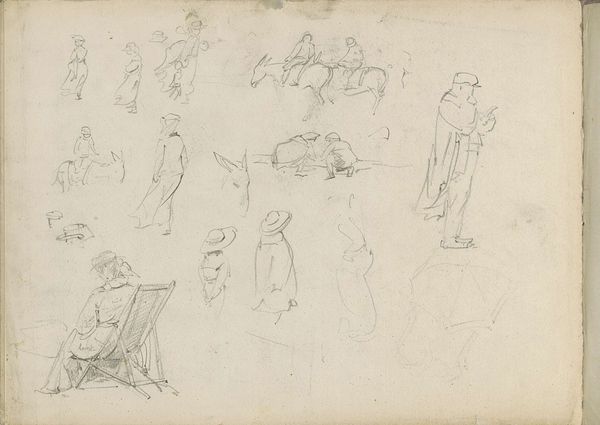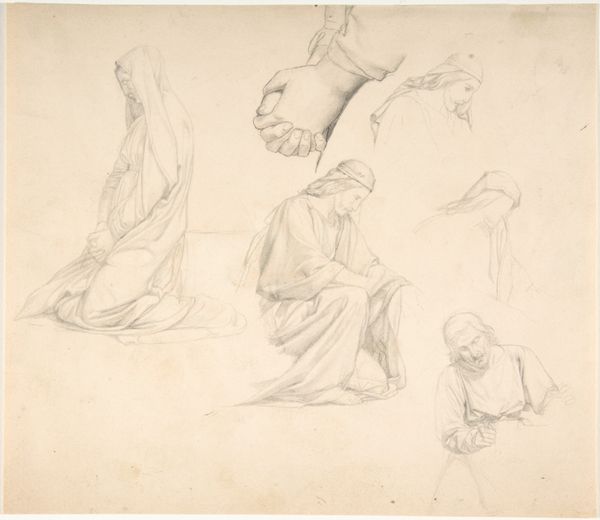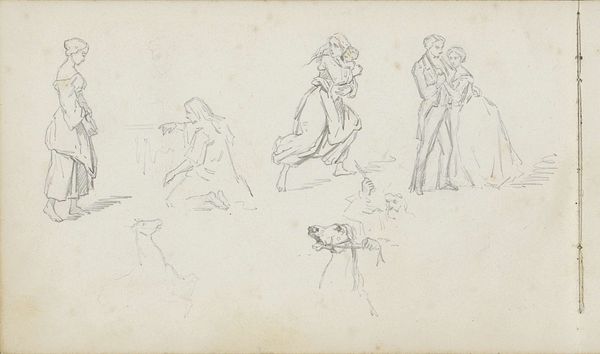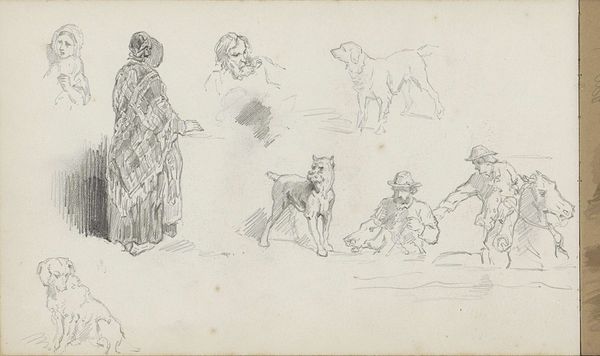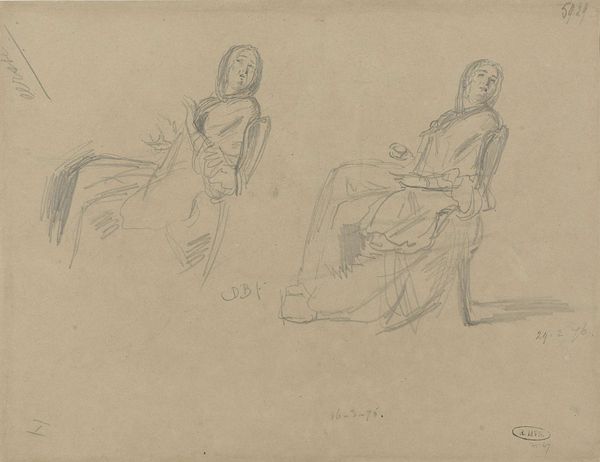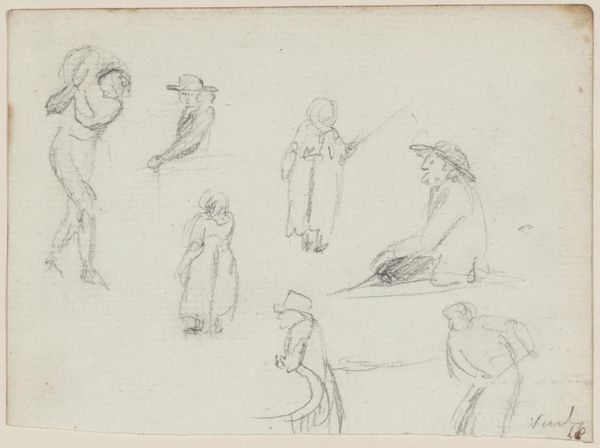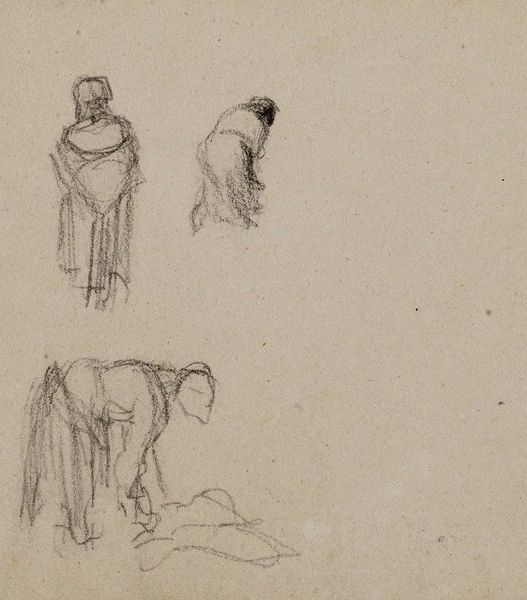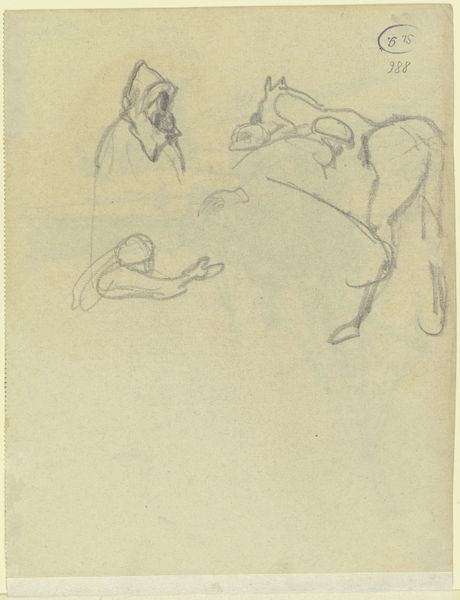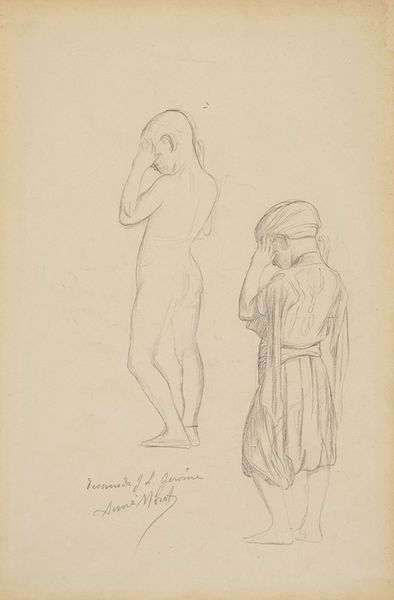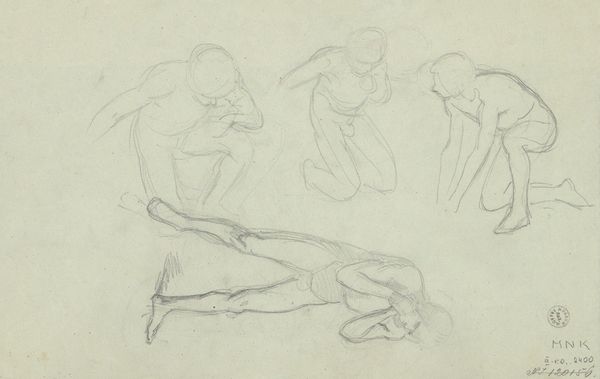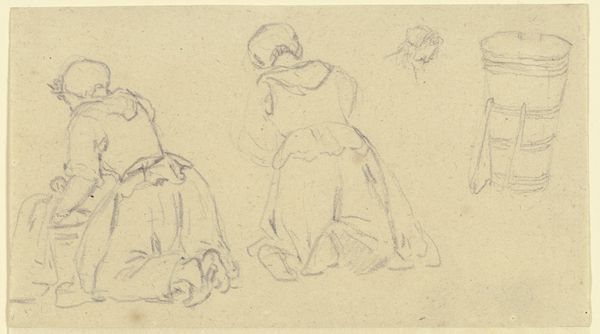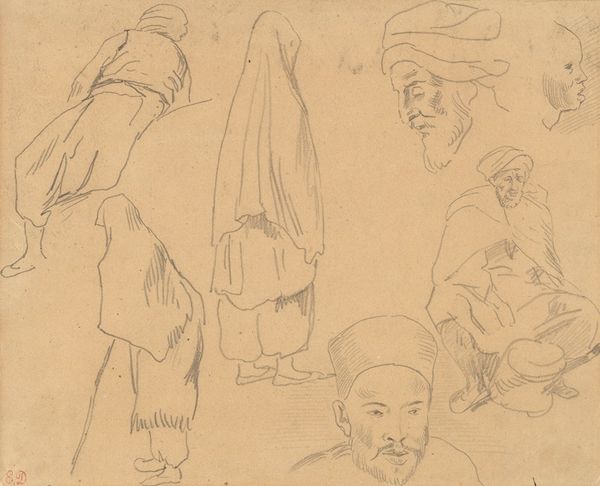
drawing, pencil
#
drawing
#
landscape
#
figuration
#
romanticism
#
pencil
#
cityscape
Copyright: Public Domain: Artvee
Curator: This is Eugène Delacroix's "Sketches of Figures and a Tile-Roofed Building, Seville, Spain," created in 1832. Delacroix, of course, is a major figure in French Romanticism. This piece, done in pencil, captures his impressions during his trip to Spain. Editor: It feels incredibly immediate. Raw even. I am immediately struck by the almost ghostly figures draped in cloth, these women especially, it's like they're present but somehow also vanishing. Curator: Exactly! Delacroix traveled to Spain and North Africa in 1832, accompanying a diplomatic mission to Morocco. The journey proved transformative; his notebooks are filled with quick sketches like these that acted as visual notes, helping him document the people, clothing, and architecture that he encountered. He would then revisit those notes to compose paintings in his studio back in France. Editor: The social context is so rich, and I want to push back on how we understand this "documentation". We see figures mostly understood to be women covered and anonymous. Considering the colonial lens through which Delacroix perceived this environment, what assumptions might we, and perhaps did he, bring to their representation? Curator: Absolutely, the exoticism is a valid critique here. Delacroix’s representations were filtered through the lens of a European traveler encountering a foreign culture. Yet it’s undeniable that this trip irrevocably changed his palette and composition. We begin to see proto-Impressionistic gestures that highlight his acute attention to light. His art represents a colonial gaze, of course, but simultaneously depicts cultural dynamism. Editor: True, this duality creates compelling tensions in Romanticism and later in orientalist works. We must think about power and its relation to beauty and difference, how they influence each other, not erasing history nor negating artistic technique. Curator: Well put. Seeing these intimate sketches, the viewer can appreciate the artistic labor but understand the artwork inside the cultural history of European Romanticism. Editor: It offers insight into Delacroix's artistic process while making us question our own perspectives and the narratives around cultural exchange, and power, embedded within it.
Comments
No comments
Be the first to comment and join the conversation on the ultimate creative platform.
